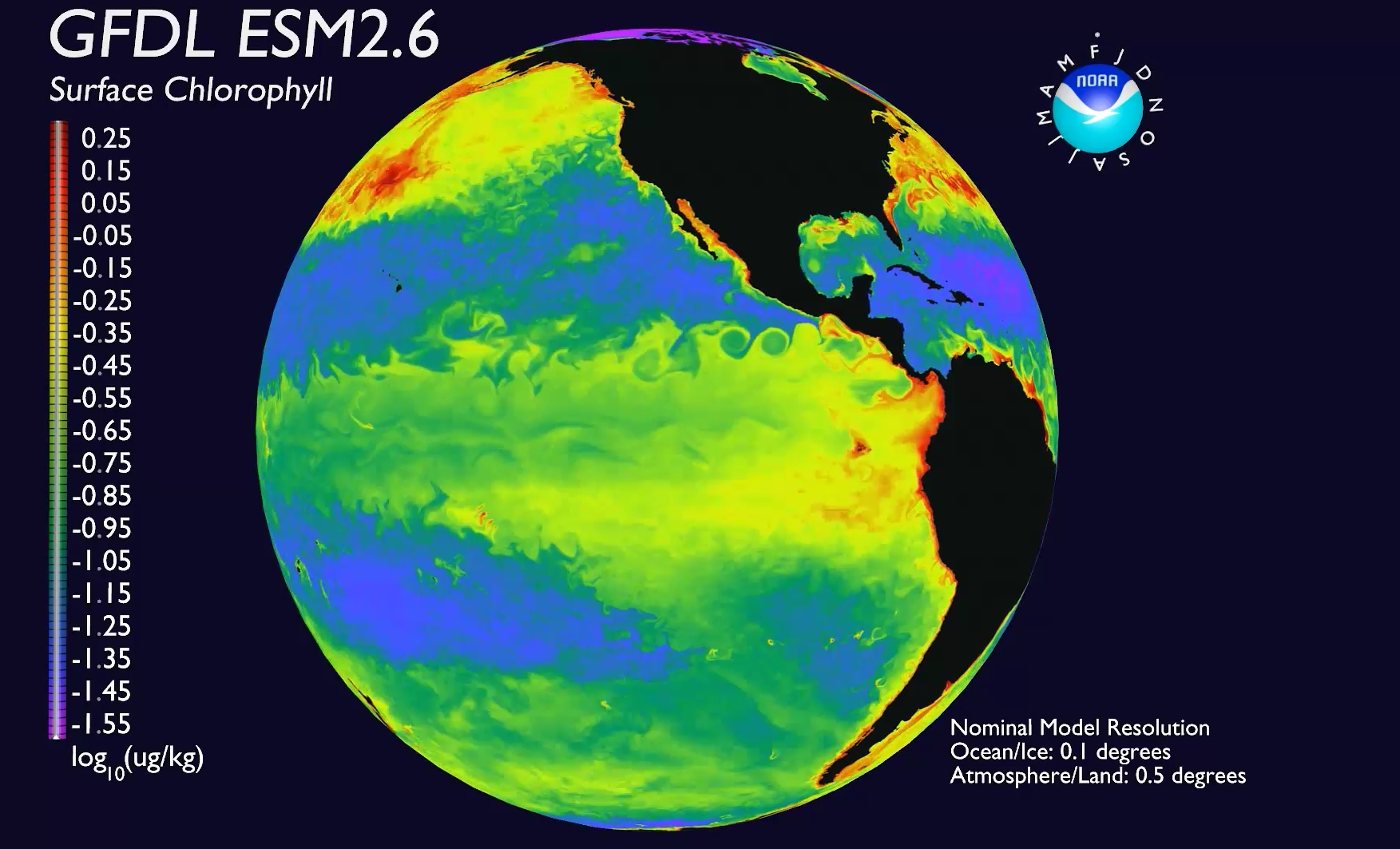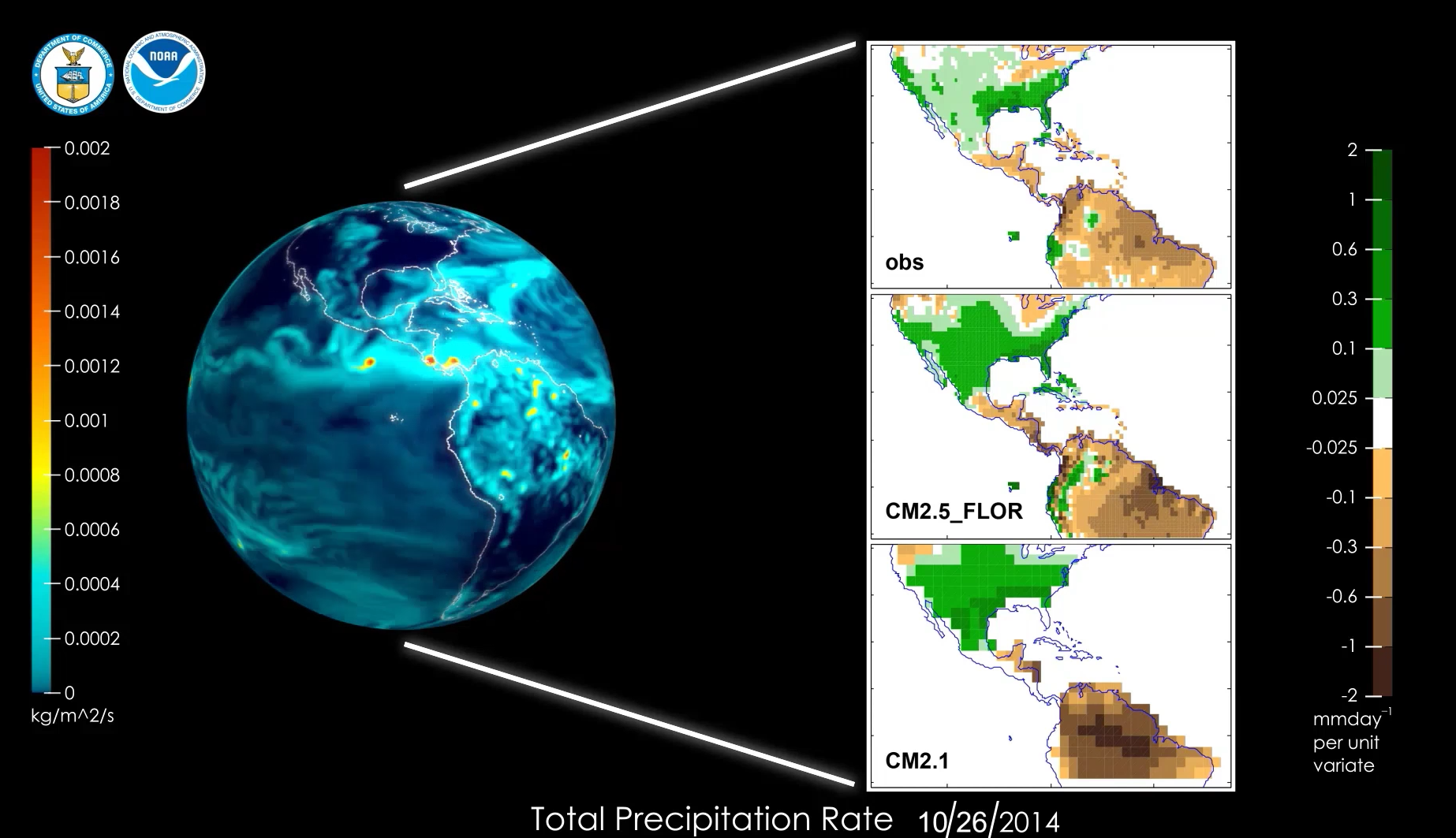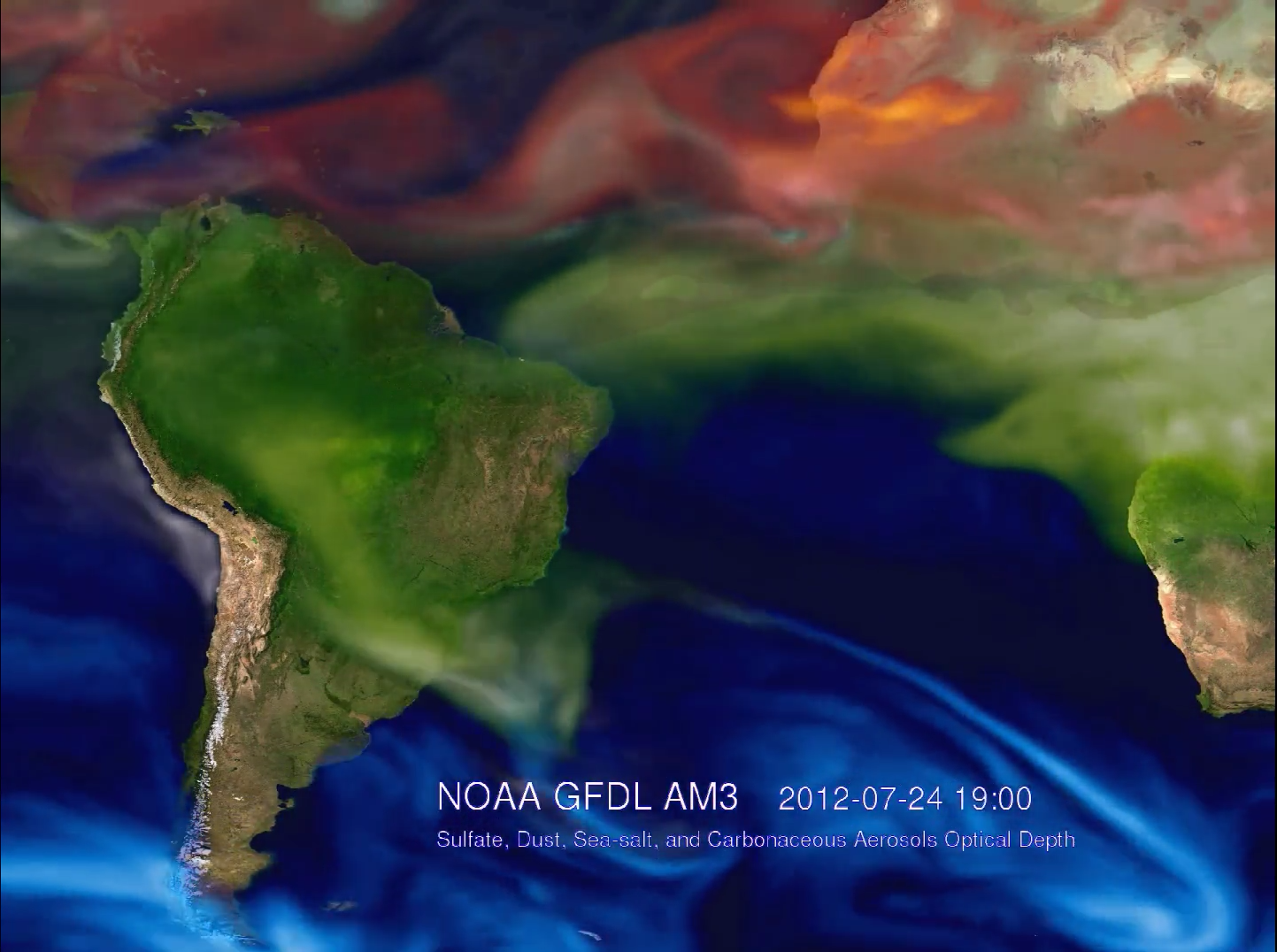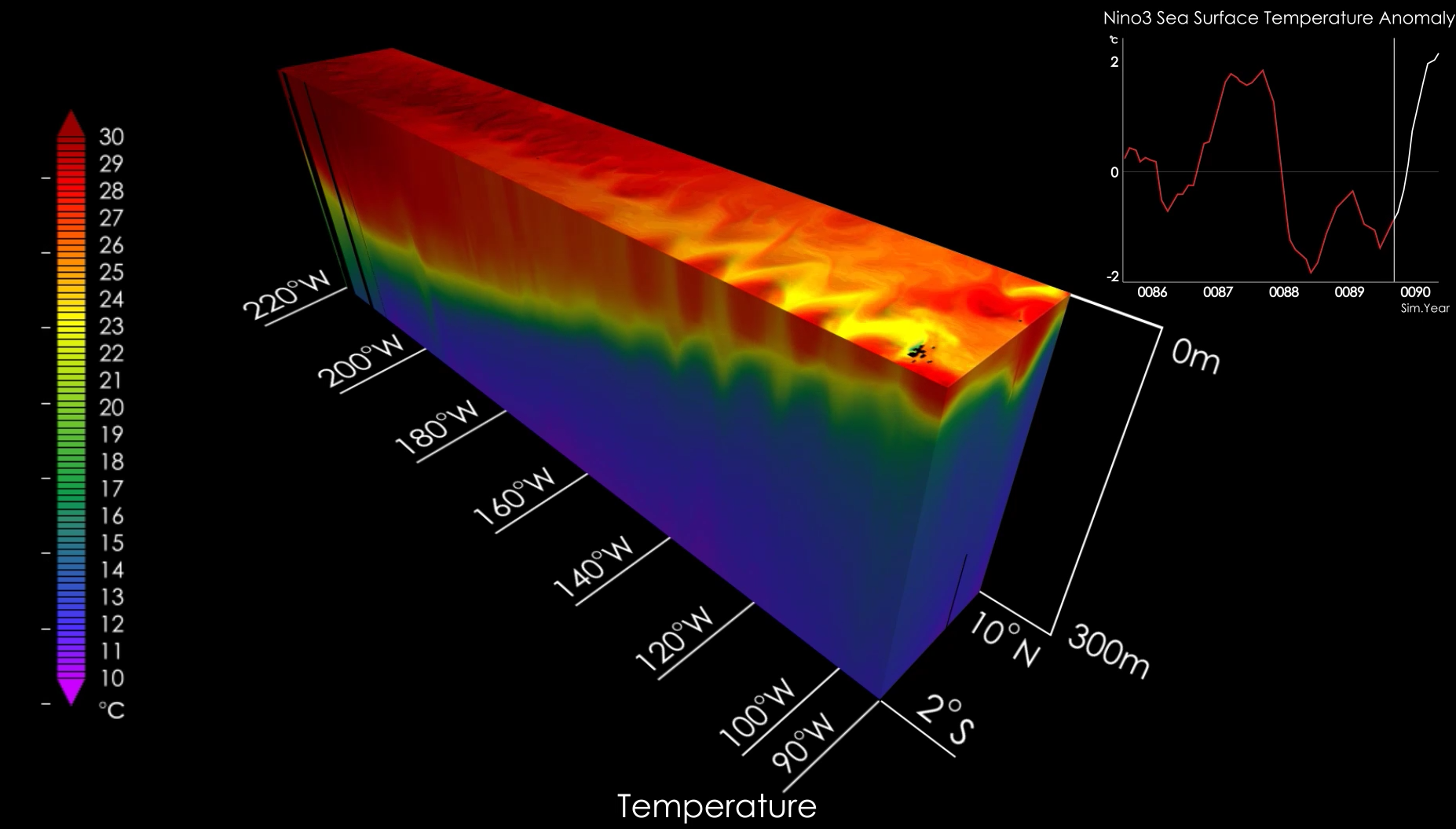Lima Climate Change Conference – December 2014
The 20th session of the Conference of the Parties and the 10th session of the Conference of the Parties serving as the Meeting of the Parties to the Kyoto Protocol took place from 1 to 12 December.
COP 20/CMP 10 was hosted by the Government of Peru, in Lima, Peru.
On December 8, GFDL’s Director,
V. “Ram” Ramaswamy hosted a NOAA Side Event at the U.S. Center, titled “Understanding and Predictability of Regional Climate and Extremes”. Wayne Higgins (CPO) and Berrien Moore (Dean, College of Atmospheric and Geographic Sciences, University of Oklahoma) participated remotely, followed by a presentation by Ram. A question-and-answer period concluded the one-hour event. During the session, Ram featured animations showcasing GFDL?s high-resolution climate predictions and projections, using NASA?s Hyper-Wall.
Ram?s talk described NOAA?s pioneering research of the Earth System to diagnose global and regional changes in climates using state-of-the-art numerical models. Building on the latest scientific understanding of regional climate phenomena and extremes, he demonstrated the progress towards predictability, using model simulations. Ram?s talk included examples of variations in sea-surface temperature and biogeochemical changes, pollution episodes caused by intra- and inter-continental transport of aerosols, heat waves, seasonal precipitation and snowpack, drought, and frequency of hurricanes.
Animations shown on Hyperwall
El Nino Simulation with NOAA/GFDL’s CM2.6 High Resolution Coupled Climate Model. This animation of model output illustrates the three dimensional complexity which is resolved in this model. A section of the Equatorial Pacific is showcased as it evolves through several ENSO events.
Delworth, Thomas L., Anthony Rosati, Whit G Anderson, Alistair Adcroft, Venkatramani Balaji, Rusty Benson, Keith W Dixon, Stephen M Griffies, Hyun-Chul Lee, Ronald C Pacanowski, Gabriel A Vecchi, Andrew T Wittenberg, Fanrong Zeng, and Rong Zhang, April 2012: Simulated climate and climate change in the GFDL CM2.5 high-resolution coupled climate model. Journal of Climate, 25(8), DOI:10.1175/JCLI-D-11-00316.1.
Winton, Michael, Whit G Anderson, Thomas L Delworth, Stephen M Griffies, William J Hurlin, and Anthony Rosati, in press: Has Coarse Ocean Resolution Biased Simulations of Transient Climate Sensitivity?. Geophysical Research Letters. DOI:10.1002/2014GL061523. 11/14.
Griffies, Stephen M., Michael Winton, Whit G Anderson, Rusty Benson, Thomas L Delworth, C O Dufour, John P Dunne, P Goddard, A K Morrison, Andrew T Wittenberg, J Yin, and Rong Zhang, in press: Impacts on ocean heat from transient mesoscale eddies in a hierarchy of climate models. Journal of Climate. DOI:10.1175/JCLI-D-14-00353.1. 11/14

Surface Chlorophyll from NOAA/GFDL’s ESM2.6 High Resolution Earth System Model. Daily output of surface chlorophyll is animated. This animation highlights the models ability to simulate a biological quantity which has global ramifications on the physical and biological climate systems.

NOAA/GFDLs CM2.5-FLOR (Forecast-oriented Low Ocean Resolution) Forecast System. This is an animation of a single member from the CM2.5-FLOR model ensemble. The animation showcases the forecast initialized fall 2014 and runs through summer 2015.
Jia, L. and coauthors (2014):Improved Seasonal Prediction Skill of Land Temperature and Precipitation in a GFDL High-Resolution Climate Model, J. Climate (submitted).
Yang, X. and coauthors (2014): Seasonal predictability of extratropical storm tracks in GFDL’s high-resolution climate prediction model. J. Climate (submitted).
Vecchi, G.A., T. Delworth, R. Gudgel, S. Kapnick, A. Rosati, A.T. Wittenberg, F. Zeng, W. Anderson, V. Balaji, K. Dixon, L. Jia, H.-S. Kim, L. Krishnamurthy, R. Msadek, W.F. Stern, S.D. Underwood, G. Villarini, X. Yang, S. Zhang (2014): On the Seasonal Forecasting to Regional Tropical Cyclone Activity. J. Climate (in press). doi:10.1175/JCLI-D-14-00158.1

Animation of Aerosol Optical Depth for June-July-August 2012 simulated with the NOAA GFDL Atmospheric Model. This animation straddles the Southern Atlantic and focuses on the region containing South America and Africa.
Ginoux, P., J. M. Prospero, T. E. Gill, N. C. Hsu, and M. Zhao, 2012, Global scale attribution of anthropogenic and natural dust sources and their emission rates based on MODIS Deep Blue aerosol products, Rev. Geophys., 50, RG3005, doi:10.1029/2012RG000388
Donner et al., 2011, The Dynamical Core, Physical Parameterizations, and Basic Simulation Characteristics of the Atmospheric Component AM3 of the GFDL Global Coupled Model CM3, J. Climate, 24(13), doi: 10.1175/2011JCLI3955.1.






